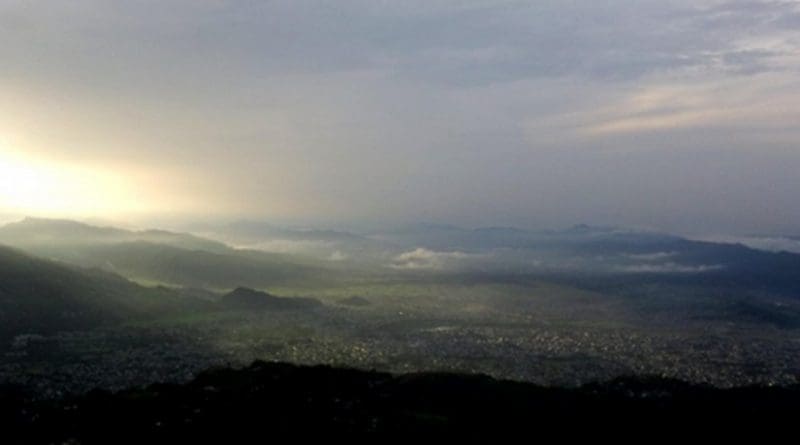Nepal: Facing Challenges Of Global Warming – OpEd
It has been witnessed in recent months that water level in major lakes in Nepal are declining. The world heritage Mount Everest is in danger from the biggest threat of global warming as glaciers around it are melting fast. The official data of the Government of Nepal also reveals that frequency of snowfalls in the mountains is declining. Recently the bodies of two Americans have been found in a glacier in the Himalayas; 16 years after they were killed by a huge avalanche.
Nepal is suffering tremendously due to global warming as water level going deeper and acute shortage of water is a big problem everywhere. The Himalayan country of Nepal neither has plenty of industries nor an excessive number of vehicles. The problem of deforestation is also not very serious here. But unusual, considerable climate change is being observed. Without its own big fault Nepal is getting the punishment from global warming; the gift of the industrialized nations to the globe, global warming, has covered the entire atmosphere of Nepal.
Climate change affects health of millions of people especially the poor, the elders and the city dwellers through increased deaths, disease and due to heat waves, floods, storms, fires and droughts.
Deformation process in the Nepalese mountains is perceptible due to breaking of the mountains. Landslides have been very normal occurrence here during the rainy season. It has been roughly estimated that there are over 12,000 landslides in Nepal each year. Landslides give very serious message of negative effect on farming land, agriculture production, livestock and road networks. They also affect negatively the development activities, economy and life and property of general people.
The Nepalese mountains have steep slopes, prone to landslides. Excessive hillside cutting, overgrazing on the slopes, erosion of land of rivers, earthquake occurrence are other factors that are causing natural disasters in Nepal.
Each year the temperature in Nepal is increasing by 0.06 degree Celsius due to greenhouse effect. The agriculture sector has been unreliable due to heavy rain, drought and flood. Fire in huge area of forest is a regular phenomenon for many months in a year. Due to no rain in the winter and excess dryness in forest, fires are ever increasing in Nepal.
Floods and landslides in Nepal happen in the monsoon season. Heavy rainfall causes flash floods in rivers originating in hilly regions. Silt and debris block the rivers for hours and sudden release of river water breaks the mountains in the form of landslides and natural disasters. The dangerous effect of global warming and snow melting was observed before couple of year; during the excess flood in the Koshi river of Nepal; the abnormal flood in Koshi River broke the dam, killed countless lives and deserted vast lands of eastern Nepal and northern Bihar of India. Future costs to control landslides and the natural disasters appear to be unbearable to Nepal.
The threats and risks of climate change have manifested not only in the melting of the Himalayan glaciers but are also seen as the root cause of violent storm surges. Nepal is not the only country affected by the Himalayan glacial melting and climate change; almost all the countries of the region around the Himalayas are severely suffering.
The other effect of global warming is observed in the hydropower sector in Nepal. Due to low water level in the rivers and reservoirs, the power generating capacity of hydropower projects have decreased by 50 % during the dry season.
Environmental campaigners refer to the Himalayas as the “third pole” and say the melting glaciers are the biggest potential contributors to rising sea levels after the north and south poles.
The Himalayan nations are already feeling the effects of climate change, with cattle and sheep herders having to seek grazing at higher altitudes. Climate change poses the highest threat to those indigenous people who have contributed the least to carbon emissions.
Glaciers in the Himalayas, a 2,400-km range that sweeps through Pakistan, India, China, Nepal and Bhutan, provide headwaters for Asia’s largest rivers, a lifeline for people who live downstream. The glaciers of the Himalayas are the renewable storehouse of fresh water which serves as the perennial source of several rivers in the country. With 1.3 billion people dependent on the water that flows down from the melting Himalayan glaciers, it is essential to tackle the impact of climate change. The Himalayas are the source of the world’s seven largest rivers and supply water to 40 percent of its population. We cannot afford to fail it. As snow reservoirs run out at an alarming rate, millions of people dependent on glacial water will be directly affected. By 2050 there may be a 75 percent retreat of glaciers in the Tibetan Plateau, which supply water to about 40 percent of the global population; Himalayan glacier melt is a global water issue.
*The author is a former expert United Nations Africa, is writer of a book Melting Everest and Falling Mountains

